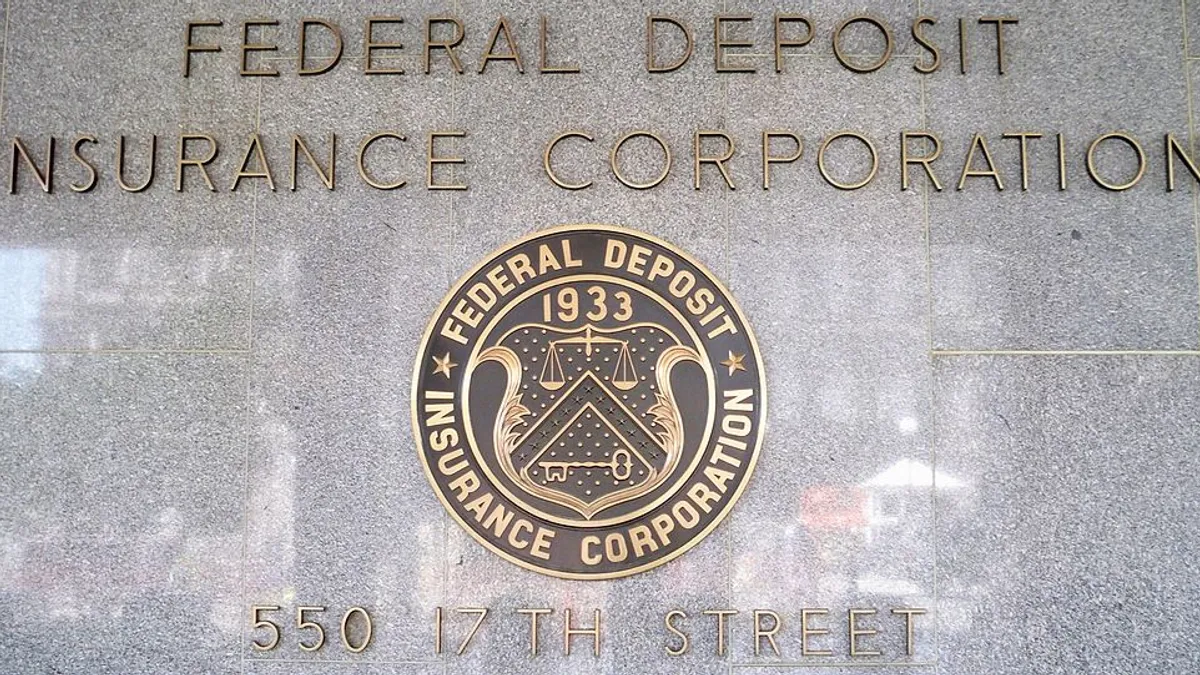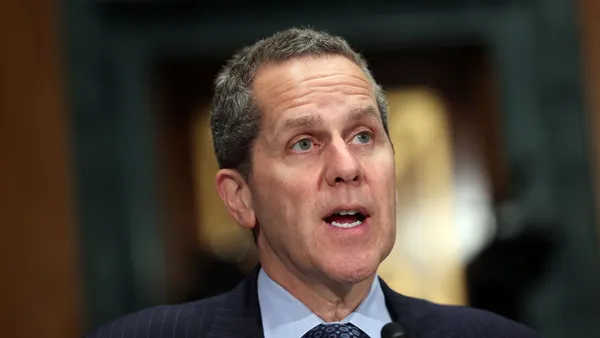Dive Brief:
- The Federal Deposit Insurance Corp. (FDIC) seeks to change the way it calculates the cap on deposit rates for less-than-well-capitalized banks under a notice of proposed rulemaking it issued Tuesday.
- The new formula would emphasize a bank's market share rather than its number of branches. Small banks have contended that institutions with a wealth of online deposits but a scarce brick-and-mortar presence skew the current numbers.
- The new calculation is an improvement, but weighting each bank equally would have been a better approach, an Independent Community Bankers of America (ICBA) executive said.
Dive Insight:
Under the cap, less-than-well-capitalized banks may not pay interest rates significantly above the going rate in the bank's market area or the rate in the area from which a deposit is accepted. For out-of-area deposits, the rate cannot exceed the national rate cap. The FDIC hadn't addressed the rate cap regulation since 2009.
Using market share still gives big banks an outsized influence over the rate, said Chris Cole, ICBA's executive vice president and senior regulatory counsel, according to American Banker.
"The big four, or all the large banks, have all the branches right now. This disproportionately means you are getting rates only based on the big banks," he said. "We would have preferred it were done on a per-bank basis."
Including credit unions in rate cap calculations would further help community banks compete, Cole added.
FDIC Chair Jelena McWilliams said the new formula should help banks better adapt to market fluctuations.
"The intent of this approach is to create a more balanced, reflective and dynamic rate cap to be better aligned with changes in markets and products and the interest rate environment," she said. "Weighting by deposits rather than by branches better reflects the marketplace in which some banks raise a high number of deposits online with a small branch network."
The rule as it stands sets the cap at 75 basis points above the average of what other banks pay. However, the more branches a bank has, the greater influence the bank has on the average. The proposed cap would be set at whichever is higher: the national rate plus 75 basis points, or the 95th percentile weighted by each bank's share of total domestic deposits.
"We appreciate the FDIC’s recognition that the National Rate Cap was never intended to be applied to well-capitalized banks," American Bankers Association CEO Rob Nichols said in a statement. "We also look forward to working with the FDIC to further improve the national rate cap so that it does not set or interfere with market rates, and provides banks flexibility to meet the needs of their depositors."
The public will have 60 days to comment on the proposal once it's published in the Federal Register.














